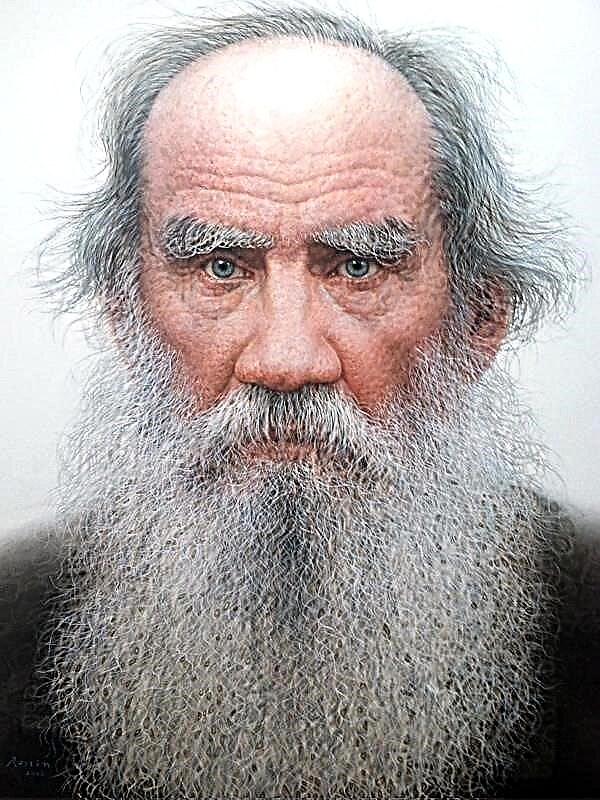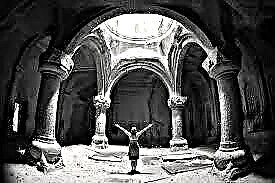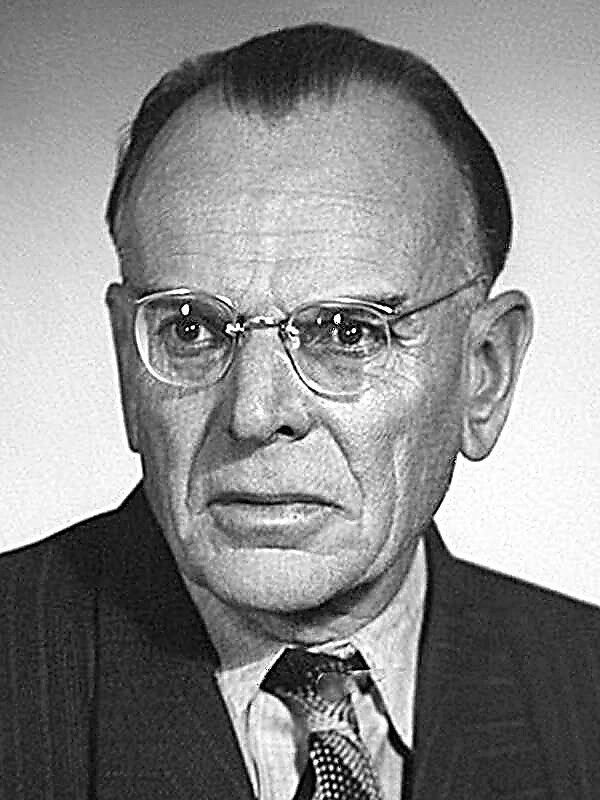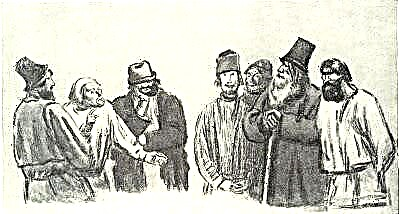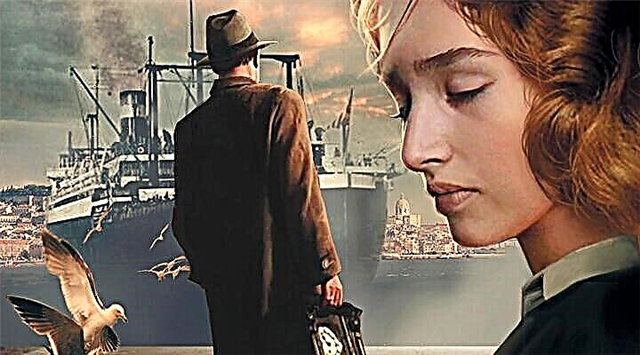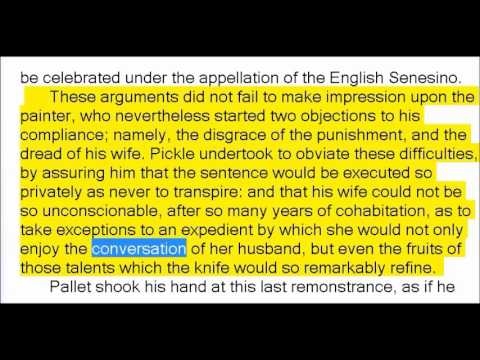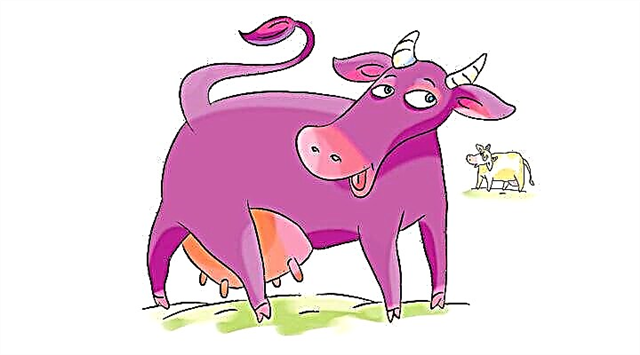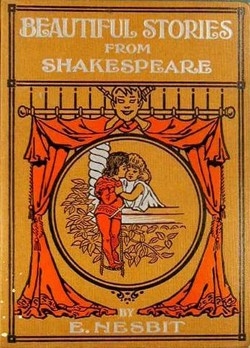The multifaceted female soul has always amazed Nekrasov, and in almost every of his works one can find confirmation of this. It would seem that the poem “Russian Women” would be more appropriate to call “Wives of the Decembrists” or, as the author intended, “Decembrists”, but the poet wanted to show his reader a larger scale of determination, courage and strength of our compatriots in various situations.
History of creation
Life brought Nikolai Nekrasov with Mikhail Sergeyevich Volkonsky, it was unknown there was a happy accident or a planned turn of fate, because after this meeting the men met more than once on a joint hunt. Nikolai and Mikhail talked a lot, including about the family. From these conversations, Nikolai Alekseevich learned about the difficult fate of the parents of Mikhail Sergeyevich: his father was one of those Decembrists who were sent to cold Siberia for hard labor, and his wife, Maria, went after her husband.
Nikolai Alekseevich was interested in the theme of the Decembrists. He collected historical information about the Decembrists from all possible sources. In June, Nekrasov went to the village of Karabikha and there he undertook to write a new poem, “The Decembrists” (then the name changes to “Russian Women”).
Nikolai Alekseevich often mentioned in conversations with friends that writing a new poem is difficult because the author wanted to write a work that could easily be censored. Another problem that the writer encountered was the lack of necessary information, because the nobles completely did not want to touch on this topic. Nekrasov didn’t have much information on Princess Trubetskoy, therefore the author decides to resort to the reception of artistic speculation in the picture of the departure and difficult path of a Russian woman. All next summer Nikolai Alekseevich writes the second chapter of the poem. However, due to the lack of historical material, experts in this field consider the events described in the work remote from reality.
Nekrasov planned to write a poem in three parts. There are even sketches of the third chapter dedicated to Alexandra Muravyova. However, the author never realized this idea, therefore today the poem “Russian Women” consists of two parts: the first chapter tells about Ekaterina Trubetskoy (1871), the second is based on notes by Maria Volkonskaya (1872), and she is dedicated to it.
Genre, direction
By genre affiliation, the work of Nikolai Alekseevich Nekrasov “Russian Women” is a poem. The author conveys images of a certain era through the narration of important cases from the life of an individual person and his emotions and feelings.
Nekrasov’s “Russian Women” use various sizes and rhymes. In the chapter “Princess Trubetskaya” iambic with alternating pair and cross rhymes is used. In the chapter "Princess M.N. Volkonskaya" the author uses amphibrach.
Images and Symbols
- Princess Trubetskaya. The first part is dedicated to Ekaterina Trubetskoy. The image of the princess is collective and at the same time purely individual. She is portrayed as a truly worthy woman who has found her destiny in following her spouse and sharing his fate. The part begins with an episode of the heroine's farewell to her father. The girl knows how hard it is for the parent to make her decision. But at the same time, she is confident that her behavior should awaken in him a sense of pride in her daughter. The thought of following her husband to Siberia determined her whole future life. Trubetskaya knows how difficult her fate will be, but she does not doubt for a second the correctness of this decision. The author depicts the heroine from the side, reveals her character through the difficulties encountered in her life's journey. The key episode in this part is a meeting with the governor, who is trying to intimidate the princess by telling her about the upcoming losses. All arguments about the difficulties of ruthless Siberia break about the great willpower
- Princess Volkonskaya. Unlike the previous heroine, Maria Volkonskaya is depicted in front of the reader at the moments of her internal improvement and formation. The road to Siberia is similar to the path of becoming an individual. The sad events that are associated with the spouse, completed the formation of the morality of her character. A tender girl who recently became a mother becomes a woman who is able to give up her usual comfort, from her favorite pastimes and go after her beloved. One of the heartfelt scenes was the episode of Volkonskaya's farewell to her baby, because, by the will of the king, the child could not leave the house. It is impossible to imagine what a woman should feel, and how to cope with her feelings and not change her mind at the moment of parting with her child. Maria's parent for a long time refused to accept the act of his child, but on his deathbed he admitted that he had never met a more fantastic woman during his long life. The difficult road to Siberia opens in front of the noblewoman, she is worried by the continuous clashes with rudeness and poverty - all this confirms the correctness of the act of her husband. The image of Princess Volkonskaya is the personification of true love and devotion to the wife.
Themes, problems and mood
- The main theme is the devotion of the wifewho shared the fate of the disgraced husband. The poem by Nikolai Alekseevich Nekrasov “Russian Women” is a work about the decisive and worthy deed of the companions of life of the Decembrists, who, not attaching importance to the problems and losses, went after their husbands to exile, remote Siberia, to wild, almost uninhabited places of their confinement. Women rejected the wealth and comfort of an established life, renounced all civil rights and chose the side of the hard life of exiles themselves, agreed to unbearable living conditions. So the strong character of Russian women, their steadfastness, loyalty and courage manifested itself. Worthy human qualities - determination, the ability to love, devotion - this is what is inherent in the main characters of the poem "Russian Women".
- Ball. The theme of the holiday and ball passes through the whole work with the leitmotif. Princesses Trubetskaya and Volkonskaya used to live in this atmosphere of luxury and constant balls and evening parties, and their life evolved as one continuous social holiday. Both of them wholeheartedly rejoiced in him, and after some time they began to arrange independently balls and receptions with magnificent dresses and incessant dances. However, spiritual intimacy with their husbands forces women to abandon this beloved occupation.
- Road. The next leitmotif of the work “Russian Women” was the theme of travel and path, road. The action takes place in contrast: the trip of Ekaterina Trubetskoy and her husband through warm Italy, the journey of young Mary to sunny Tauris - and the endless path of both women through the frosty, sparing no one Siberia. The snowy and frosty Russian land, on which the existence of an ordinary person is shocking with a completely different exotic, is opposed to the beauty and cosiness of southern life.
- The main problems are the injustice of the inhuman punishment of the tsar and the terrible living conditions in remote corners of Russia. In the work, the exiles often call the mine “hell”, I am surprised at the arrival of the girls: “Is it not an angel of God?” So, a poem appears in the poem that resembles a well-known apocrypha, in which it is told about the descent into the hell of the Mother of God. But if in the folk legend the Virgin, who saw the sufferings of sinners, involuntarily sympathized with them, then in the Nekrasov poem, on the contrary, ordinary people who have been sentenced to hard labor for their “crimes” express pity to those who are now tormented by the desire to protect them. The author creates the image of Russia-hell, because both in hard labor and outside of them, a person is subject to various torments, and the main sin is incorrect political actions and views.
Main idea
Through the image of both princesses, the author conveyed to the reader all the greatness of the Russian woman, her spiritual strength. Before us is a heroine who is not subject to public opinion and estate, who dared to break out of the comfort zone in the name of love. The author in all the works praised the people's exploits, but also in the noble circle Nekrasov found true heroes capable of self-sacrifice for the sake of their homeland. The true character of the main characters could never have manifested. However, Princesses Trubetskaya and Volkonskaya, thanks to the uprising of the Decembrists and the exile of their spouses, were able to prove that the life of the noble girls went beyond magnificent balls and silly small talk. They are able to reunite with the people and together go against tyranny - this is the main idea of the poem.
The poem focuses on the representatives of the nobility. Life completely satisfied them, but the detention and exile of their spouses changes everything. Let Nikolai Alekseevich Nekrasov not be an eyewitness to the events taking place in the work, but thanks to the documents, stories and notes of the witnesses, he was able to fully recreate the portraits of the heroines, in which the bravery, endurance and fidelity of most of the women of Russia was concluded. They see the meaning of life in love and family, but their role is appreciated by the author even more, because the noble example that noblewomen set for their children is the key to a happy future for Russia. The new generation will fight for their rights and will overcome all obstacles.
Means of artistic expression
The aesthetic component in the poem “Russian Women” helps to emphasize artistic means of expression such as epithets (“rainbow dreams”; “gloomy house”; “magnificent hall”; “dreams are peaceful and light”; “indelible mark”; “sad ringing”) and comparisons (“Smartly dressed children, like flowers, Smartly dressed old people”; “braid black as pitch”). In addition, the author uses anaphora ("Forgive you too, my native land, Forgive me, unfortunate land!"), An ellipse, also called an ellipse ("Right - Yenisei").
We also see metonymy (“And the father’s secretary (in crosses ...)”), inversion (“into the living world”; “And a frisky childhood jokingly sweeps through”), an oxymoron (“living dead”), a rhetorical question (“Why, damn country , did Ermak find you? .. "), metaphors (" That hand hitherto burns my hand ... ";" The sick, tired mind is boiling ";" The mountains have disappeared "), hyperbole (" The magnificent hall is gracefully cleaned, everything burns with lights ") and personification (“Dancing, eating, fighting fights”; “Longing heart”).

